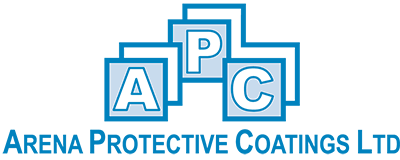
A guide to industry terminology
A guide to industry terminology https://arenaprotectivecoatings.co.uk/wp-content/uploads/2016/07/WordCloud-1024x643.png 1024 643 Arena Protective Arena Protective https://secure.gravatar.com/avatar/e72580f179fb755bed38e5f667b10f99?s=96&d=mm&r=g- Arena Protective
- no comments
At Arena, we use different procedures and coating systems for a variety of reasons. Influencing factors may be the environment, health and safety, customer specification, decorative requirements, the list goes on. When dealing with coating systems and procedures you will also hear lots of different terminology, which can be confusing if you don’t understand what these terms mean. Below is a list of words you will often come across in our industry and an explanation as to what they mean.
Degreasing
The removal of oil or grease contaminants from parts; achieved using a chemical solution.
Vapour Degreasing
Usually carried out in a steel tank with a heated solvent reservoir, or sump at the base and a cooling zone close to the top. When the hot vapour encounters an item at a lower temperature, such as a component to be cleaned, it condenses and runs down the surface dissolving any contamination it comes into contact with. As the parts are raised from the bottom of the tank the heat retained by the item evaporates the thin film of liquid solvent, leaving the part clean and dry.
Masking
The preparation of parts before coating. Parts are masked or caps are added to areas that are specified to have no paint e.g. machined surfaces or threads.
Substrate
Any surface to which a coating is applied.
Surface Preparation
A general term referring to the preparation which must be given to a surface, whether that be wood, metal, or other material, before the coating is applied.
Dry Grit Blasting (Air Blasting)
Commonly known as shot blasting, dry grit blasting is the most generally established method of surface preparation for the application of coatings to metal. It is used to remove rust, mill scale, or other contaminants, creating the correct surface profile that is suitable for adhesion.
There are a wide range of abrasives available depending on the substrate that is to be cleaned. These can be non-metallic (metal slags, aluminum oxide, etc) and metallic (steel shot or grit, etc.
The standard grades of cleanliness for abrasive blast cleaning in accordance with ISO 8501-1 are:
- Sa 1 – Light blast cleaning
- Sa 2 – Thorough blast cleaning
- Sa 2½ – Very thorough blast cleaning
- Sa 3 – Blast cleaning to visually clean steel
Primer
This is the first complete application of paint of a painting system, which is applied to a surface. Such paints are designed to provide adequate adhesion and sealing qualities to new surfaces and are formulated to meet the special requirements of the surface.
Build Coat (Intermediate)
A specially formulated material, which goes between the primer and the undercoat. It adds thickness whilst also helping to further protect the substrate, as this coating contains additives.
Undercoat
A coating applied in preparation for a finish coat.
Topcoat
This is the final layer of coating and as well as providing protection of the substrates, it ensures the product is aesthetically pleasing.
Wet Film Thickness (WFT)
The original thickness of a coating when applied, before evaporation of the solvent.
Dry Film Thickness (DFT)
The thickness of a paint film, which is left after the evaporation of solvent and other drying reactions.
Overspray
Paint that when sprayed misses the desired surface and is wasted.
Matte (Flat) Finish
A shine free, dull finish.
Eggshell Finish
A finish with a gloss higher than matte and considerably less than semi-gloss.
Semi Gloss Finish
A finish with a gloss intermediate between matte and gloss.
Full Gloss Finish
A high shine finish.
If you have any further questions, or you need to discuss your requirements in more depth, please contact us.
- Posted In:
- Uncategorized
